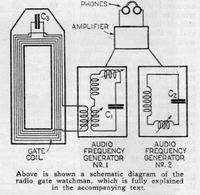pal114525
Member level 5
Hi,
In designing a metal detector with VLF technology,
1. why do we choose VLF technology as the best among other frequency e.g. HF, UHF etc.
2. What are the advantages of the VLF technology than the other frequency?
Thanks.
In designing a metal detector with VLF technology,
1. why do we choose VLF technology as the best among other frequency e.g. HF, UHF etc.
2. What are the advantages of the VLF technology than the other frequency?
Thanks.

